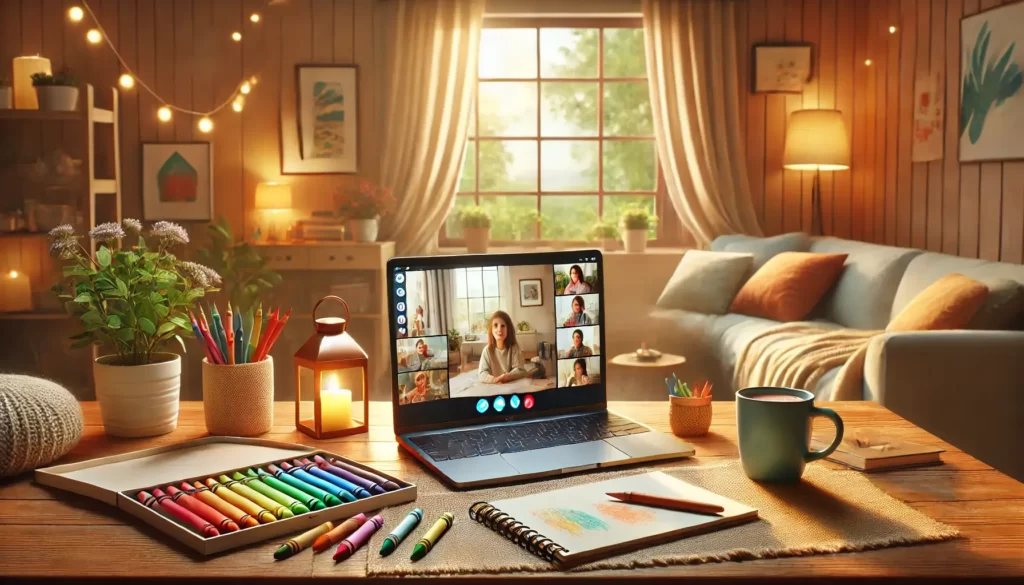Therapy for Grieving Children

Online Resources for Grieving Kids
January 5, 2025
Helping Children Memorialize Loved Ones
January 5, 2025Grief among children is quite a complex process and often quite different from what grown ups go through. For example, while adults can talk about their feelings, children cannot understand or express their emotions. This is where children grief therapy comes in, which provides a safe and helpful place for children to sort out and look after their losses. If left unaddressed or without any proper help, sorrow in children can create long lasting problems in the emotional, social, and developmental arenas. It is certain that therapy can provide a child with ways and means to handle such difficult feelings in a healthy way, giving the child strength and emotional growth.
Understanding Therapy for Grieving Children
What Is Therapy for Grieving Children?
Children grief therapy generally refers to the special ways through which children deal with the sorrow of losing a loved one. All such therapies aim at providing an opportunity for sharing the feeling in a safe environment, from where the child will learn to handle the situation. The three common types of children grief therapy are individual therapy, group therapy, and play therapy. Each has its benefits in particular and helps different types of grief. Play therapy engages the child through games, it helps children communicate their feelings even if they don’t know how to put it through words. Group therapy offers peer support, priceless to those children who feel that they are left alone with their sorrow.
Types of Therapy for Grieving Children
- Individual Therapy: A series of personal meetings arranged according to the particular needs of a single child, which helps therapists deal with the special feelings and difficulties each child confronts.
- Group Therapy: Meetings where children who have gone through similar experiences talk and heal. This type of therapy helps kids see that they are not alone in their experiences.
- Play Therapy: This allows the child to express themselves by playing things such as toys, games, and art. It is mostly helpful for younger children who may have difficulty discussing their feelings.
- Family Therapy: These involve all the family members to make the home supportive, for this to happen we recommend reading How To Talk to Kids About the Death of a Loved One. This approach enables families to recover together and bond their relationship more strongly.
Why Therapy Is Essential for Kids Coping With Grief
Emotional, Social, and Developmental Benefits
Children grief therapy provides significant emotional support by helping kids recognize and express their feelings in a healthy way. It will also help children to connect with others who have similar problems and hence not feel so alone. Therapy ensures that unresolved grief does not prevent the development of the child in further, giving them strength and emotional maturity. Otherwise, without such help, the children will start to develop bad coping habits or experience problems at school. Therapy acts as a preventative measure, ensuring children can process their emotions and move forward with confidence.
Benefits of Group Therapy for Grieving Children
Creating a Supportive Environment
The children grief therapy group makes a caring place for children to understand and be supported by others. Being with other kids which have faced similar life experiences helps feelings of loneliness. This setting allows children to share feelings and feel safe in expressing them. It further shows them that what they are undergoing is normal, making them feel that this thing called grief is part of life, everyone goes through once and he or she doesn’t need to face it alone.
Encouraging Healthy Emotional Expression
The children grief therapy group usually comprises activities like art, music, and storytelling that enable children to share their feelings in a good way. The guided talks and activities encourage the children to face their grief rather than hiding it. With the use of such creativity, children will learn that it is okay to show feelings and is an important part of healing. With this kind of support, their emotional health will improve as time goes by.
Fostering a Sense of Community and Belonging
Within the children grief therapy group, children find comfortable being with people that suffer the same problem. The shared experiences will create a sense of community that may make children feel they are really not alone after all on their journey. Feeling connected to others lightens the pain of grief and allows hope. Often, such friendships and bonding are developed in group therapy which sometimes extend well beyond the sessions, hence providing long lasting emotional support.
Professional Guidance in a Group Setting
Group discussions and activities are professionally conducted by therapists to ensure that each child gets the required attention in group settings. Children learn various ways of coping with their situation and are given opportunities to discover emotional resources that are important in the healing process. This setting assists the therapist in underlining special needs or difficulties of a child for extra care, if required.
How to Find Group Therapy for Grieving Children
Local Therapy Groups and Resources
Check community centers, schools, and hospitals to find local children grief therapy groups. Many groups offer free or low cost sessions in order to help children in grief. Ask school counselors and pediatricians to recommend good therapy groups. Parents might look in libraries and religious groups for more information or contacts for such therapy programs.
Online Group Therapy Options
Virtual children grief therapy is an increasingly popular resource, enabling the family to talk with special therapists from their homes. This is helpful in cases where families live really far apart or need flexible times. Websites, like Zoom and special therapy sites such as Grieftolife or Talkspace come in handy. Online therapy will also try to introduce a number of fun digital tools that will enhance experiences for children.

Questions to Ask Before Choosing a Therapy Group
In your search for a children grief therapy group, ask the therapist, how the sessions are arranged and the number of children in the group. One should, therefore, ensure that it would match the age and needs of your child. Also, ask about what kinds of activities will go on and how progress is checked. These are some of the things that will help a parent be sure they are making a proper choice for their child.
Types of Group Therapy Activities for Grieving Kids
Art and Play Therapy
Creative drawing, painting, and especially playing with toys is part of children grief therapy. All these creative activities allow the child to show their feelings which he or she can’t talk about. Art therapy allows a child to understand his or her feelings through pictures, while play therapy provides a safe environment to experiment with their emotions. Such activities provide entertainment and a feeling of normality which can be very beneficial for children in grief
Storytelling and Journaling
Children grief therapy most often uses storytelling and journaling to encourage the kids in reflecting on their experiences. Writing and sharing stories about loved ones is really healing to the kid, because they remember good memories with that person, while working through their grief. These types of activities not only help the kid with his or her grief, but also it helps to develop communication and emotional vocabulary to address and share their feelings appropriately.
Interactive Group Discussions
Group children grief therapy mainly involves discussions that could allow children to share their thoughts and experiences openly. While sharing, children learn to accept their feelings and become emotionally strong in this process. Working together in group discussions builds up empathetic understanding, crucial for healing the grief.
Tips for Parents and Caregivers
How to Support a Child Attending Group Therapy
Encourage your child to participate in children’s grief therapy by offering a safe atmosphere at home where they would have the opportunity to discuss their feelings. Be slow and supportive in making them feel safe to share their views without criticism, if you have no idea how to achieve this result HonorYou recommends reading the article “Helping Your Child Cope After a Loved One Passes Away.”. Try to also Reinforce the need to attend sessions and interact with their peers. A show of interest in their progress, discussing what they have learned from therapy, will add value to the healing process.
Monitoring Emotional Progress
Be very observant about changes in your child’s mood and behavior while attending children grief therapy. Improvement may be seen by his improved mood, improved talk, and interest in taking part in daily activities. If the child is improving slowly, discuss more ideas with the therapist. Regularly checking in with your child will also help in catching the concerns early.
FAQs
1. What is the best type of therapy for grieving children?
The best form of children grief therapy depends on the child’s personality and age as well as their specific needs. Individual therapy, group therapy, and play therapy are all good options. The best option may be discussed with a therapist.
2. How does group therapy help children process grief?
Group therapy will provide companionship, reduce feelings of isolation, and allow expression of feelings. Children grief therapy in a group will help children develop a sense of belonging and learn from other people’s experiences.
3. What age is appropriate for group grief therapy?
Children grief therapy can be helpful for kids of all ages, but groups are typically tailored to specific age ranges to ensure activities and discussions are age appropriate.
4. How do I find an online therapy group for my child?
These sites can be found on therapy platforms, community organizations, and referrals from local therapists. Some websites also provide directories for virtual therapy. Most of these online child grief therapy groups can be found in such places.
Can therapy replace family support in grieving kids?
While children grief therapy is helpful, it cannot replace family love and support. It supports the family through professional advice and connects to others, which helps the healing process.


